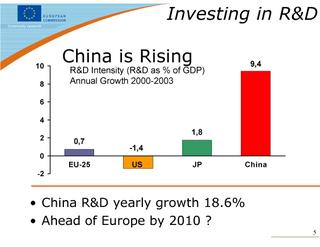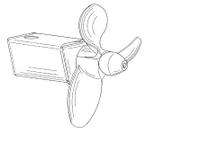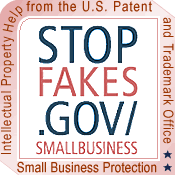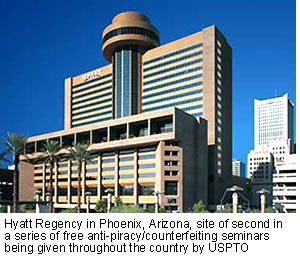On July 12, 2005, the USPTO formally announced and implemented its new,
Pre-Appeal Brief Conference Pilot Program. Effective immediately, the USPTO is offering applicants an optional procedure to review the examiner's rejection prior to the actual filing of an appeal brief. The pilot program will run for at least six months and the Office may extend, terminate, revise or otherwise take appropriate action after evaluating its effectiveness at the end of that period. If the program is to be made permanent, the Office will promulgate the appropriate changes to title 37 of the Code of Federal Regulations.
Under the new procedure, any applicant may file a request, with the filing of a notice of appeal and before the filing of an appeal brief, for a panel of experienced examiners to perform a detailed review of appealable (not petitionable) issues. No extensions of time are available for filing the request for review and the process does not apply to reexamination proceedings. Upon receipt of a properly filed request, a Technology Center Art Unitsupervisor will designate a panel of examiners experienced in the field oftechnology to review the applicant's remarks and the examiner's rejections. The panel will include at least a supervisor and the examiner of record. The panel will then decide if an issue for appeal is, in fact, present in the record.
A sample request form has been created and is available on the
USPTO forms page, as
PTO/SB/33. The request may not be more than five (5) pages total and "the remarks should be drafted with the expectation that for a clear error in fact or other deficiency, a long detailed explanation is not needed." No supplemental requests or arguments will be accepted. Applicants are therefore encouraged to refer to arguments already of record rather than repeating them in the request. This may be done by simply referring to a prior submission by paper number and the relevant portions thereof (e.g., see paper number 3 at pages 4 to 6). However, "references such as 'see the arguments of record' or 'see paper number X' are not helpful and will just obfuscate the real issues for review."
Any actual issues lacking factual basis, including interpretations of the prior art teachings or claim scope as contrasted with clear error infacts, are appropriate for the traditional appeal process and submissionof the appeal brief. For grounds where a clear issue on proper interpreta-tion exists, applicant is advised to proceed to appeal with the timelyfiling of the appeal brief. This program "is not intended to be, and is not, an alternative for filing an appeal."
The applicant will not be permitted to attend the review and no interviews will be granted prior to issuance of the panel's decision. The Office "should mail a decision within 45 days of receipt of a properly filed request" which will state one of the following "findings:"
- The application remains under appeal because there is at least one actual issue for appeal.
- Prosecution on the merits is reopened and an appropriate Office communication will follow in due course. In appropriate circumstances, a proposed amendment may accompany the panel's decision proposing changes that, if accepted, may result in an indication of allowability for the contested claim(s).
- The application is allowed on the existing claims and prosecution remains closed.
- The request fails to comply with the submission requirements and is dismissed.
The decision will also summarize the status of the pending claims (still rejected, withdrawn rejections, objected to or allowable claims). The decision will not contain any additional grounds of rejection or any restatement of previously made rejections.
A pre-appeal brief conference panel decision that the application remains under appeal is not final agency action for purposes of court review. A decision by a panel to withdraw the rejections of any or all of the claims on appeal is not a decision by apanel of the Board of Patent Appeals and Interferences, and, as such, would not result in any patent term extension of adjustment under 35 U.S.C. Sec. 154(b) (37 CFR 1.701(a)(3) and 1.702(e)). An applicant dissatisfied with the result of the appeal conference must pursue the appeal before the Board of Patent Appeals and Interferences.
However, following a panel review under this pilot program, the examiner retains the option to reopen prosecution or to allow an application after the filing of an appeal brief. This unlikely situation might arise, for example, where new arguments or evidence are presented in the appeal brief.
The period of time for filing the appeal brief will be the later of the two-month period set in 37 CFR 41.37(a) or one month from the mail date of the decision on the request. If a request for a pre-appeal brief conference is filed with a notice of appeal, the time period set in 37 CFR 41.37(a)(1) is waived so that an appeal will not stand dismissed if an appeal brief is not filed within two months of the filing date of a notice of appeal, but is filed within one month of the decision on the request. To the extent that any other existing USPTO rule is inconsistent with this pilot program, the rule is waived until regulations directed to pre-appeal brief conferences are promulgated, or the pilot program is ended.
Under this pilot program, the request must be filed with the notice ofappeal. However, the Office is considering, as part of a more permanent implementation of the pre-appeal brief conference program, permitting applicants to file the request within two months (non-extendable) of the receipt of the notice of appeal for a fee ($130.00), in which case the period for filing an appeal brief would simply be the two-month period set in 37 CFR 41.37(a)(i.e., the mailing of a decision on the request would notprovide any new time period for filing the appeal brief).


















